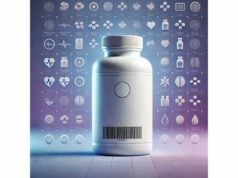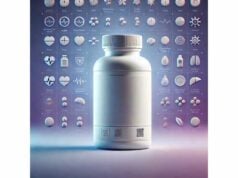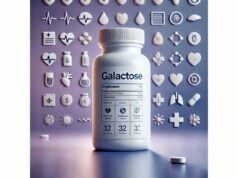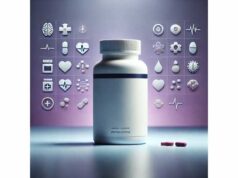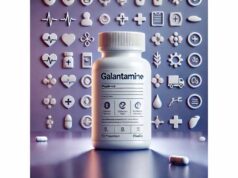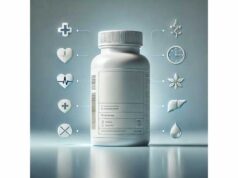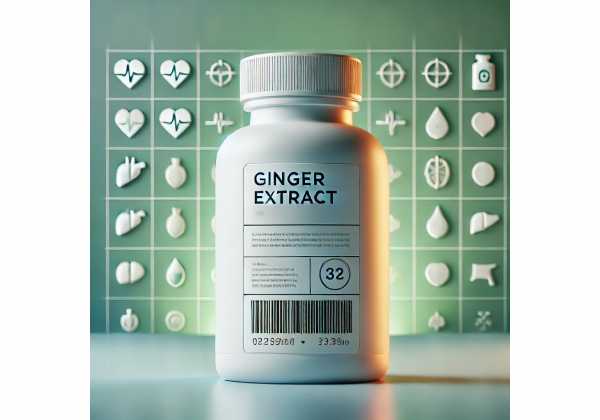
Ginger extract comes from the rhizome of Zingiber officinale, concentrated to deliver the pungent compounds—chiefly gingerols and shogaols—responsible for its warming taste and many biologic effects. Unlike essential oil (which is mostly aromatic terpenes), standardized extracts capture these non-volatile actives and are taken orally as capsules, tablets, or liquid tinctures. People most often use ginger extract to reduce nausea in pregnancy and after surgery, ease painful menstrual cramps, and support comfortable digestion. Research also explores roles in osteoarthritis symptoms and functional dyspepsia. As with any concentrated botanical, smart use matters: match the form to your goal, choose quality products with clear standardization, and stay within practical dose ranges. This guide walks you through what works, how to use it, how much to take, who should avoid it, and where the evidence is strongest—and where it is still uncertain.
Essential Insights
- Best-supported benefits: reduced nausea in pregnancy and after surgery; relief of primary dysmenorrhea pain.
- Typical adult doses: 500–1,500 mg/day of standardized extract in divided doses; start low with food.
- Safety note: most adverse effects are mild (heartburn, bloating); be cautious with anticoagulants and major surgery.
- Avoid or seek medical advice: pregnancy beyond food amounts without clinician guidance, children, gallstone disease, and people on warfarin or with fragrance/ginger allergies.
Table of Contents
- What is ginger extract and how it works
- Proven benefits in humans
- How to choose and use ginger extract
- How much ginger extract per day
- Safety, side effects, and who should avoid it
- Evidence at a glance: what is solid and what is uncertain
What is ginger extract and how it works
What it is. Ginger extract is a concentrated preparation derived from the ginger rhizome. Most oral supplements use solvent extraction (ethanol, water, or hydroalcoholic mixtures) to pull out pungent phenolics—primarily [6]-gingerol and related gingerols—that can convert to shogaols with drying and heat. Many reputable products list a standardization, such as “≥5% gingerols” or a “gingerols plus shogaols” total. This differs from the essential oil, which is distilled and contains volatile terpenes (e.g., zingiberene) but not the pungent phenolics; essential oil is not a substitute for oral ginger extract.
How it may work. Ginger’s biologic actions are multi-target and dose-dependent:
- Antiemetic effects. Gingerols and shogaols appear to modulate serotonin (5-HT3) and cholinergic signaling in the gut–brain axis. By slowing serotonergic stimulation of the vomiting center and mildly enhancing gastric motility, ginger can reduce the perception of nausea.
- Analgesic and anti-inflammatory effects. Ginger constituents down-regulate inflammatory mediators (COX-2, TNF-α, IL-6, NF-κB) and may desensitize TRPV1 channels, helping with pain states like primary dysmenorrhea.
- Prokinetic and carminative effects. In functional dyspepsia, ginger has been studied (alone and with artichoke) for improving early satiety and post-prandial fullness, likely through effects on gastric emptying and accommodation.
- Antioxidant activity. Phenolic constituents scavenge reactive species and may modestly improve oxidative stress markers in some trials.
Forms you will see.
- Powdered extract in capsules/tablets. Look for the botanical name (Zingiber officinale), plant part (rhizome), extraction solvent, and standardization.
- Tinctures/liquids. Convenient for flexible dosing; verify the herb-to-menstruum ratio and the equivalent dry-herb dose.
- Food forms (tea, chews). Useful for mild symptoms but less standardized; effects vary with preparation and dose.
Quality signals. Choose brands that provide lot-specific testing, heavy-metal and microbial checks, and—ideally—quantitative gingerol/shogaol data. Color and aroma vary naturally, but a sharp “burn” with minimal aroma can indicate high shogaol content (from overheating or prolonged storage), which may be more irritating for some users.
What it is not. Ginger extract is not a cure-all. Its best evidence sits in well-defined symptom clusters—nausea and dysmenorrhea—where brief courses and divided doses are common. For chronic inflammatory diseases or metabolic outcomes, results are mixed; ginger should complement, not replace, standard care.
Practical expectations. For nausea, effects—if they occur—are usually noticeable within 30–60 minutes of a dose. For menstrual cramps, users often evaluate benefit over the first one to three days of menses. For dyspepsia, give a consistent regimen 2–4 weeks before deciding whether to continue.
Proven benefits in humans
Pregnancy-related nausea (NVP). Across numerous randomized trials and several meta-analyses, oral ginger demonstrates small-to-moderate reductions in nausea intensity compared with placebo over short courses (typically 3–7 days). Dosing most often ranges from 500 to 1,500 mg/day of powdered or standardized extract, divided two to four times daily. Effects are stronger for nausea than for vomiting frequency, and results vary between individuals. Importantly, trials generally report good tolerability at these doses, with mild heartburn or bloating the most common complaints. If symptoms are severe (e.g., hyperemesis gravidarum), medical therapy is essential; ginger may be considered an adjunct if your prenatal clinician agrees.
Postoperative nausea. Randomized trials in surgical patients suggest ginger can reduce nausea severity in the hours after anesthesia. Protocols vary—some use a single 1,000 mg pre-op dose, others divided doses before and after surgery. Effects tend to be modest and most apparent when ginger is started early; surgery teams may integrate ginger alongside standard antiemetics in select cases. Because anesthesia and bleeding risk must be considered, follow perioperative guidance on when to stop supplements before surgery (often 5–7 days, see safety section).
Primary dysmenorrhea (period pain). Ginger has one of its clearest non-nausea signals here. Meta-analyses pooling randomized trials show meaningful reductions in menstrual pain scores compared with placebo, with efficacy similar to NSAIDs in some head-to-head comparisons over the first 1–3 days of menses. Doses in studies often cluster around 750–2,000 mg/day in divided doses, started at the onset of bleeding (or sometimes 1–2 days prior if cycles are predictable). Ginger is not a replacement for evaluation of severe or atypical pelvic pain; rule out secondary causes when appropriate.
Functional dyspepsia (indigestion). Ginger is frequently paired with artichoke leaf extract in trials, with several studies showing improvements in post-prandial fullness, early satiety, and epigastric pain over 2–4 weeks. Combination products may work via complementary gastric and biliary effects. Pure ginger-only data are more variable, but some randomized trials indicate symptom relief for bloating and fullness, especially when taken before meals.
Chemotherapy-induced nausea and motion sickness. Findings are mixed. Some trials note symptom reductions with pre-dose ginger; others find no difference versus placebo when modern antiemetic regimens are used. For motion sickness, outcomes depend on dose timing relative to travel, individual susceptibility, and comparator drugs. Ginger is reasonable as an add-on, not a standalone, in these settings—start with small, well-timed doses and track your response.
Osteoarthritis symptoms. Evidence is heterogeneous. Some trials suggest modest reductions in knee pain with standardized extracts, while others show no difference from placebo. When benefits are reported, they are generally small and may take several weeks. Ginger can be tried as a complement to exercise therapy, weight management, and guideline-based analgesics, with expectations set accordingly.
Bottom line. The human data are strongest for nausea (especially in pregnancy) and primary dysmenorrhea, reasonably suggestive for short-term postoperative nausea, and mixed for dyspepsia (ginger alone) and osteoarthritis. When trying ginger extract, use clear, time-limited trials: if you do not notice improvement within a reasonable window for your condition, discontinue rather than escalating indefinitely.
How to choose and use ginger extract
1) Match the form to the job.
- Nausea (pregnancy, postoperative, motion): capsules or chewable tablets with standardized extract; tea or chews may help mild cases but are harder to dose.
- Primary dysmenorrhea: standardized capsules for reliable dosing during days 1–3 of menses.
- Functional dyspepsia: standardized capsules taken 15–30 minutes before meals; combination with artichoke is common in research.
- Everyday digestion: culinary ginger (tea, food) is reasonable for mild bloating, but supplements are better studied for targeted outcomes.
2) Decode the label. Look for:
- Botanical and part: Zingiber officinale, rhizome.
- Extraction: solvent (ethanol, water, hydroalcoholic); “standardized to ≥5% gingerols” or similar.
- Per-capsule content: e.g., 250 mg or 500 mg.
- Quality markers: lot-specific testing (heavy metals, microbes), expiration date, and contact information for adverse event reporting.
3) Start low and time it well.
- With food: Taking ginger with a small snack or meal can reduce heartburn.
- For nausea: Split the day’s dose—e.g., 250–500 mg, two to three times daily. If travel triggers symptoms, take 30–60 minutes before departure.
- For dysmenorrhea: Begin at onset of bleeding (or the day before, if cycles are predictable), continue up to 3 days, and reassess each cycle.
- For postoperative plans: Only under clinician direction; hospitals may have specific protocols.
4) Build a sensible self-test.
- Duration: For nausea, benefits should appear within hours to a day. For dysmenorrhea or dyspepsia, evaluate over 1–2 cycles or 2–4 weeks.
- Stop rules: If you develop persistent heartburn, rash, bruising, or any unexpected symptom, stop and seek advice. If there is no clear benefit, discontinue.
5) Combine thoughtfully.
- Ginger pairs well with B6 (for pregnancy nausea) and, in dyspepsia research, artichoke leaf extract.
- Avoid stacking multiple prokinetic or bitter herbs if you are prone to reflux.
- Keep at least 2 hours between ginger and iron supplements if you notice nausea with iron.
6) Storage and shelf life. Keep bottles tightly capped, away from heat and moisture. Most products remain potent for 1–3 years unopened and 6–12 months after opening. Discard if you notice clumping, off-odors, or label expiration has passed.
7) Real-world tips.
- If swallowing is difficult in early pregnancy, open capsules and stir powder into warm lemon water or applesauce to achieve the same mg dose (taste will be pungent).
- For people sensitive to spice, choose products standardized to gingerols + shogaols at modest levels and take strictly with food.
- Track response in a symptom diary; score nausea or pain 0–10 before and after dosing to see if ginger helps you.
How much ginger extract per day
There is no single “best” dose for every person or purpose. The sweet spot balances symptom relief with tolerability and aligns with what clinical trials have actually tested.
Common adult ranges (standardized oral extract):
- General nausea/NVP: 500–1,500 mg/day, split 2–4 times daily (for example, 250–500 mg with breakfast, lunch, and late afternoon). Many pregnancy trials used ~1,000 mg/day for 3–7 days.
- Postoperative nausea: often 1,000 mg/day as a single pre-op dose or divided perioperatively in protocols; follow clinical guidance.
- Primary dysmenorrhea: 750–2,000 mg/day in divided doses for up to 3 days beginning at onset of menses; some start 24 hours prior if cycles are predictable.
- Functional dyspepsia: 1,000–1,200 mg/day in divided doses, usually before meals, for 2–4 weeks, then reassess.
If your supplement is labeled by “% gingerols.” Standardization helps with batch-to-batch consistency, but practical dosing still uses milligrams of extract. A capsule with 500 mg “≥5% gingerols” provides ≥25 mg gingerols; studies typically did not target a precise milligram of gingerols, so stay within the extract ranges above.
Titration plan.
- Start at the low end of the range that fits your goal.
- After 2–3 doses (for nausea) or 1–2 days (for dysmenorrhea), increase gradually if needed and tolerated.
- Maximum self-care ceiling: avoid exceeding 1,500–2,000 mg/day without clinician oversight, especially if you are on medications or have comorbid conditions.
Timing tips that matter:
- With food to minimize heartburn.
- Before triggers (travel, meals) when used for prevention.
- Divided dosing beats large single doses for most people.
Special populations.
- Pregnancy: Use only with obstetric guidance. When approved, stay within ≤1,000–1,500 mg/day for short courses, and stop if you notice spotting, dizziness, or worsening vomiting.
- Older adults or reflux-prone individuals: Start at 250 mg once or twice daily and advance cautiously.
- Liver or kidney disease: Data are limited; involve your clinician before use, keep doses low, and monitor symptoms.
What about ginger tea or food? Culinary ginger is a great addition for taste and mild symptom days. However, extract dosing is more predictable; the gingerols per cup of tea vary widely with steep time and preparation.
Not for ingestion: Ginger essential oil is not the same as ginger extract and should not be swallowed without prescriber oversight.
The guiding principle is minimal effective dose for a defined time. If results are not convincing within the expected window for your symptom, step back and reassess rather than escalating indefinitely.
Safety, side effects, and who should avoid it
Typical side effects. Ginger extract is widely reported as well tolerated at commonly used doses. When side effects occur, they are usually mild and transient: heartburn, abdominal discomfort, bloating, gas, or loose stools. Taking with food, splitting doses, and avoiding late-night dosing can help. Skin reactions (rash, itch) are uncommon but warrant stopping the product.
Allergies and intolerances. Anyone with a known allergy to ginger or related botanicals should avoid ginger supplements. If you develop hives, swelling, wheeze, or throat tightness, seek urgent care.
Pregnancy and lactation. Ginger has been studied most in early pregnancy for short-course nausea relief with generally reassuring safety signals at doses up to about 1,000–1,500 mg/day. Even so, decisions are individualized: consult your prenatal clinician, particularly if you have a history of bleeding, recurrent miscarriage, or if your nausea is severe. During breastfeeding, limited data suggest typical culinary intake is fine; for concentrated extracts, discuss with your pediatric provider.
Bleeding risk and anticoagulants. Ginger can influence platelet function in vitro, and isolated case reports describe changes in anticoagulation tests. Larger analyses suggest no consistent interaction at modest oral doses, yet variability exists. Out of caution, people on warfarin or direct oral anticoagulants should involve their prescribing clinician before using ginger extract and report any unusual bruising, dark stools, or nosebleeds.
Surgery and procedures. Because of theoretical bleeding and anesthesia considerations, most perioperative protocols advise stopping herbal supplements 5–7 days before surgery or invasive dental work unless your team advises otherwise.
Gallbladder disease and reflux. Ginger can stimulate digestive secretions and may aggravate biliary colic or reflux in sensitive individuals. If you have gallstones, active gastric/duodenal ulcers, or severe GERD, avoid self-experimenting and seek tailored advice.
Drug interactions to keep on the radar.
- Anticoagulants/antiplatelets: see above.
- Hypoglycemic agents: rare reports of additive effects; monitor if you notice unusual shakiness or sweating.
- Chemotherapy: because antiemetic regimens are carefully balanced, clear any supplement—including ginger—with your oncology team.
Liver safety. Ginger enjoys a strong safety record with no consistent link to liver injury in clinical trials or pharmacovigilance registries. Extremely rare idiosyncratic reactions to multi-ingredient products have been described; product quality and accurate labeling matter.
Quality and authenticity. Purchase from reputable brands that disclose testing. Avoid megadose or “proprietary blend” products without ginger content per capsule. If a product triggers repeat side effects despite low dosing with food, consider brand switching or stopping altogether.
When to stop and seek care. Persistent vomiting, signs of dehydration, severe or localized abdominal pain, black or bloody stools, new neurologic symptoms, or any rapid swelling or trouble breathing are medical red flags—skip supplements and seek prompt evaluation.
Used thoughtfully—at clear, evidence-based doses for defined timeframes—ginger extract is a low-risk option for many adults. Context, dosing, and quality determine how safe it is for you.
Evidence at a glance: what is solid and what is uncertain
Most consistent findings
- Nausea in pregnancy: Multiple randomized trials and meta-analyses show ginger improves nausea scores over 3–7 days, typically at 500–1,500 mg/day in divided doses. Effects on vomiting frequency are smaller and variable. Safety signals are generally reassuring within these short courses.
- Primary dysmenorrhea: Randomized trials and pooled analyses support clinically meaningful reductions in menstrual pain versus placebo, with similar efficacy to NSAIDs in some studies over short windows (first 1–3 days of menses).
- Postoperative nausea: Ginger can reduce nausea severity after anesthesia in some protocols; impacts on vomiting episodes and antiemetic use are inconsistent.
Promising but mixed
- Functional dyspepsia: Trials of ginger paired with artichoke show symptom improvements in post-prandial distress syndrome. Pure ginger-only studies are inconsistent; best results appear with pre-meal dosing over a few weeks.
- Osteoarthritis: Evidence ranges from modest pain relief to no effect. If benefit occurs, it is usually small and takes several weeks.
Inconclusive or insufficient
- Chemotherapy-induced nausea: Results vary widely depending on modern antiemetic protocols, cancer type, and dosing. Ginger may help some patients as an add-on but is not a stand-alone therapy.
- Metabolic markers and weight: Trials conflict on lipids, fasting glucose, or body weight changes; any effects appear small and context-dependent.
Methodological notes that shape expectations
- Short durations: Many ginger trials last days to weeks, not months; long-term effects and rare adverse events are less well characterized.
- Heterogeneous products: Extracts differ (solvent, ratio, gingerol/shogaol content). Choose brands with clear standardization to improve reproducibility.
- Dose–response: Subgroup analyses in pregnancy suggest ≤1,500 mg/day may be optimal for nausea. Higher is not always better and may increase heartburn.
Practical synthesis
- If you are pregnant with mild to moderate nausea, a clinician-approved, short trial of 500–1,000 mg/day divided may be worth trying.
- For period pain, consider 750–2,000 mg/day in the first 1–3 days, stopping if you do not notice a real difference.
- For dyspepsia, try pre-meal dosing for up to 4 weeks; continue only if symptoms clearly improve.
- Always integrate ginger with broader care: hydration and vitamin B6 for NVP, non-drug strategies and antiemetics post-op, exercise and heat therapy for cramps, and guideline-based therapies for chronic conditions.
By aligning your use with what the best data support—and by setting simple stop rules—you maximize the chance that ginger extract adds real value to your routine while keeping risks low.
References
- Ginger on Human Health: A Comprehensive Systematic Review of 109 Randomized Controlled Trials 2020 (Systematic Review)
- Efficacy of Ginger in the Treatment of Primary Dysmenorrhea: A Systematic Review and Meta-analysis 2021 (Systematic Review)
- The preventive and relieving effects of ginger on postoperative nausea and vomiting: A systematic review and meta-analysis 2022 (Systematic Review)
- The Effect of Ginger (Zingiber officinalis) and Artichoke (Cynara cardunculus) Extract Supplementation on Functional Dyspepsia: A Randomised, Double-Blind, and Placebo-Controlled Clinical Trial 2015 (RCT)
- Ginger – LiverTox – NCBI Bookshelf 2024 (Safety Review)
Disclaimer
This article is educational and does not replace personalized medical advice, diagnosis, or treatment. Ginger extract can interact with health conditions and medicines, including anticoagulants. If you are pregnant, breastfeeding, preparing for surgery, have gallstones or significant reflux, or take prescription drugs, talk with your healthcare professional before using ginger supplements. Stop and seek care for persistent vomiting, dehydration, unusual bruising or bleeding, severe abdominal pain, rash, breathing difficulty, or any concerning new symptom.
If you found this guide useful, please consider sharing it on Facebook, X (formerly Twitter), or any platform you prefer, and follow us for future evidence-based updates. Your support helps us continue creating high-quality, people-first health content.

